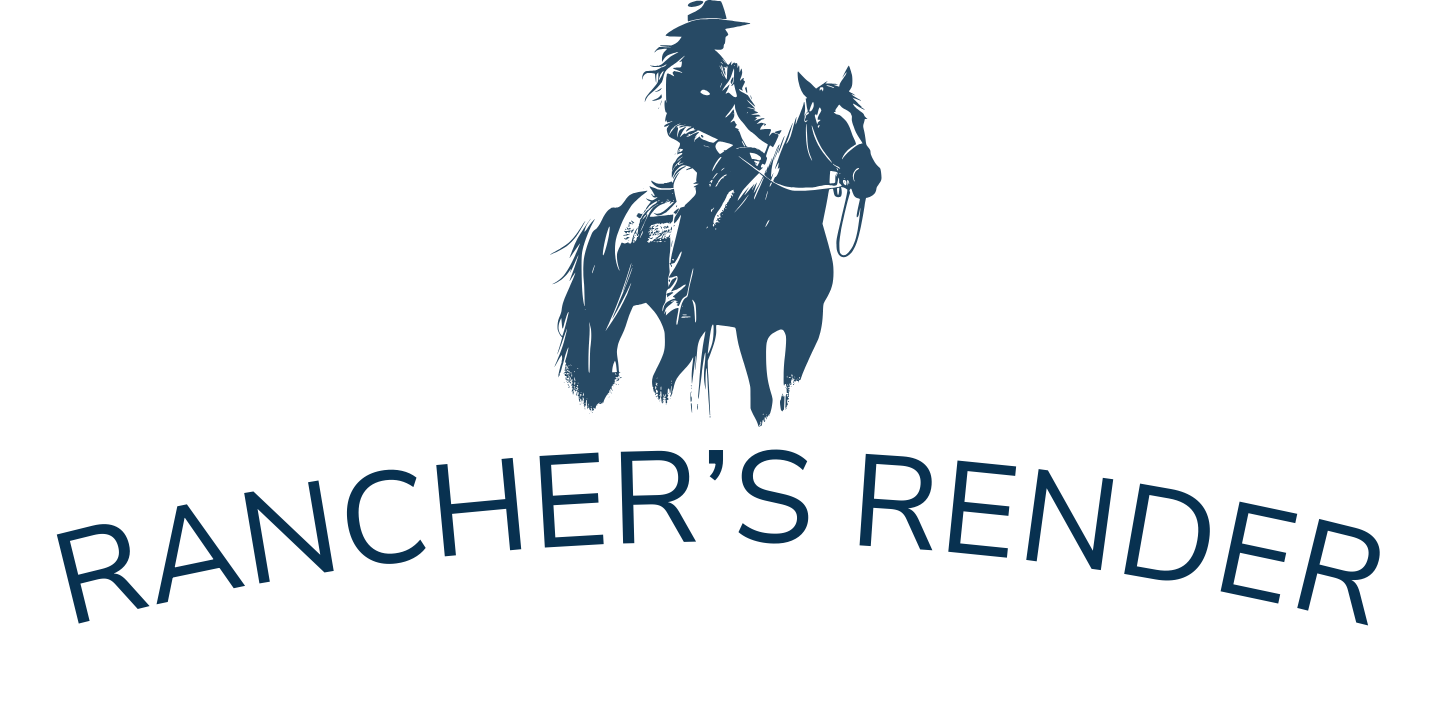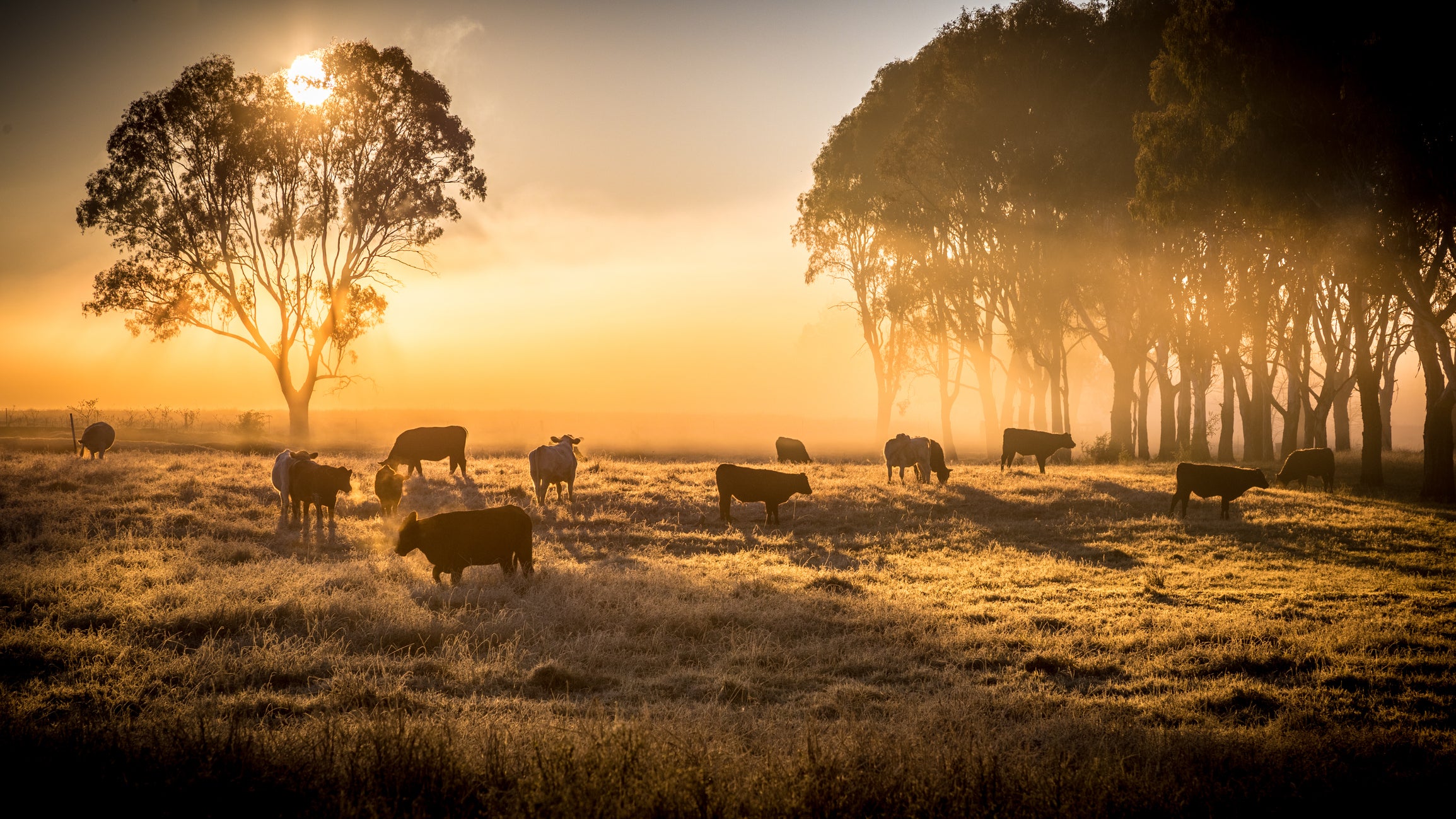Regenerative Ranching Methods for Producing Superior Tallow Skincare
the transparency problem & how we're fixing it
We'll look at how 20+ years of regenerative agriculture on our New Jersey ranch creates the nutrient-dense, premium-quality tallow that makes our skincare exceptional. If you like knowing exactly where your skincare comes from, you're in the right place.
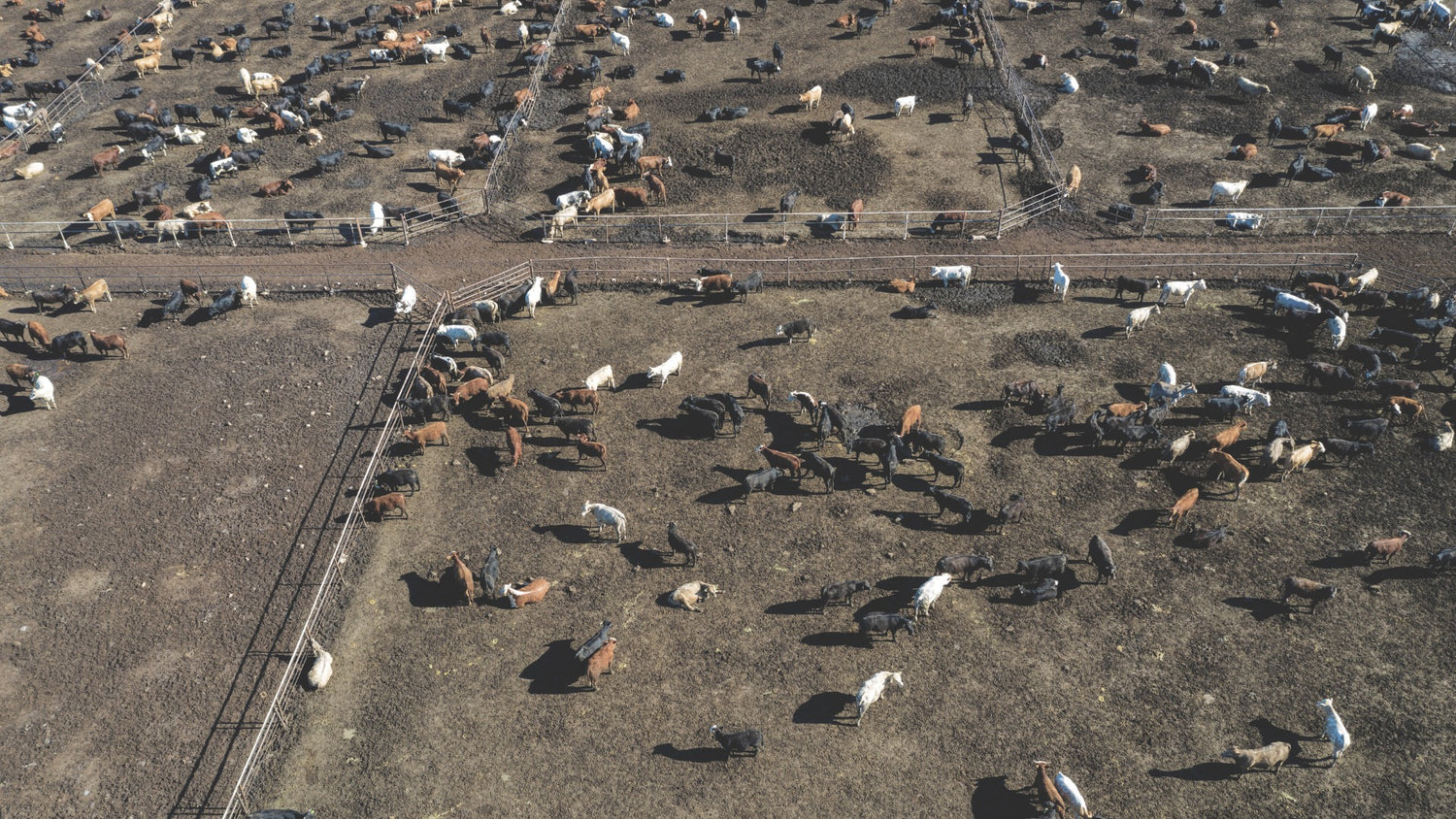
Giant Feed Lots & Factory Farming?
How NOT to Raise Healthy Cattle
Science confirms what instinct told us long ago. Animals confined to factory farms aren't as healthy, and produce poor quality tallow.
People know this and try to find "Grass-Fed" options which is a good start. But, there's more to the story.
TRUE - OR - FALSE:
Answer: FALSE
The Reality: Approximately 85% of "grass-fed" beef sold in the US is imported from other countries.
Where It Actually Comes From:
- Australia (largest supplier - accounts for ~60% of grass-fed imports)
- New Zealand (second largest supplier)
- Uruguay (significant South American supplier)
- Argentina (growing supplier)
- Brazil (emerging supplier)
Why This Happens:
- Lower production costs overseas (cheaper land, labor)
- Year-round grazing seasons in southern hemisphere countries
- Established export infrastructure built specifically for US market
- No requirement to disclose origin on most retail labels
What This Means for Tallow:
Most tallow brands source from meat processors who buy this imported beef. When they say "grass-fed tallow," they're often referring to beef that traveled 8,000+ miles to reach your skincare jar.
Answer: FALSE
The Labeling Loophole:
"Product of USA" only means the product was processed, packaged, or underwent substantial transformation in the United States.
Real-World Examples:
- Beef from Australia → processed in US facility → "Product of USA" ✓
- Skincare bottled in California with imported tallow → "Product of USA" ✓
The Only Label That Guarantees US Origin:
- "Born, Raised, and Harvested in the USA" (voluntary USDA program)
- Requires documentation of animal's entire life in the US
- Very few companies use this label due to cost and verification requirements
What Tallow Brands Actually Mean:
When a tallow skincare brand shows "Product of USA," they're often telling you where the jar was filled, not where the cow lived.
Our Approach:
100% of our suet for tallow is raised right here on our Ranch in Hope, Jersey.
What happens if we run out? Then we run out.
Just like the best bakery in town runs out of bread by lunchtime. They'll be another harvest, another batch of tallow, another day. We'll never outsource.
Answer: FALSE
The Industry Standard Loophole:
Most "grass-fed" cattle are actually "grass-fed, grain-finished."
How It Actually Works:
- Months 1-18: Cattle graze on grass (this qualifies them as "grass-fed")
- Final 90-120 days: Moved to feedlots and fed grain for rapid weight gain
- Result: Technically "grass-fed" but nutritionally similar to conventional beef
The Nutritional Impact:
- Grain finishing changes fatty acid profile (reduces beneficial omega-3s)
- Alters vitamin content in the fat (lower fat-soluble vitamins)
- Creates different texture in rendered tallow (more prone to rancidity)
What "Grass-Finished" Means:
- 100% grass diet from birth to harvest
- No grain supplementation during any life stage
- Superior nutritional profile with higher omega-3s and vitamins
- More stable tallow with better shelf life
Industry Statistics:
- ~85% of "grass-fed" beef is actually grain-finished
- <15% is truly grass-fed AND grass-finished
- Most consumers don't know the difference
Our Standard:
Our cattle never see a kernel of grain. 100% grass-fed AND grass-finished for their entire lives on our New Jersey pastures.
Answer: NOT LIKELY
To be fair, we know a few small ranches who do it the right way.
We usually see vauge language like this:
- "Sourced from local farmers" (which local area? which farmers?)
- "Trusted ranch partners" (who are they? where are they located?)
- "Family farms" (which families? what states?)
- "Ethically sourced" (from where exactly?)
Why Brands Use Vague Language:
- They don't actually know their supply chain beyond their immediate supplier
- They buy from meat processors who source from multiple locations
- Specific details would reveal imported origins in many cases
- Marketing language sounds good without legal commitment
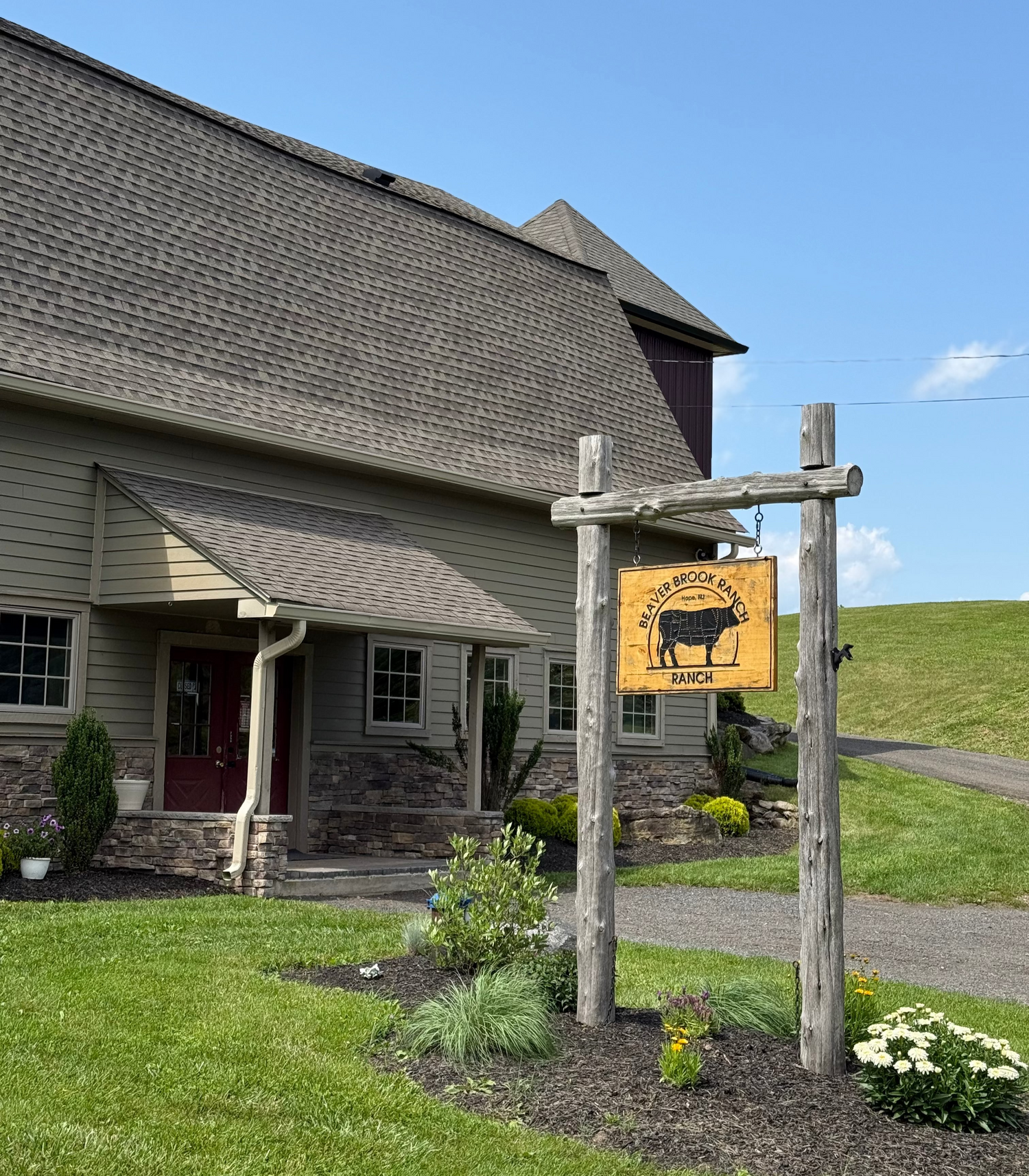
What makes us different?
Single-Source Transparency
At Rancher’s Render, we raise our own cattle and make our own tallow skincare. We do both with the same simple philosophy:
- Take care of the Land
- Take care of the Animals
- Provide Quality Products that our Customers can Trust & Enjoy
Our beef tallow skincare is from cattle raised entirely on a grass diet and rotated across our fields in a way that restores soil and improves pasture over time.
The Roots of Regenerative Grazing
a farming lesson from mother nature
Centuries before fencing, feedlots, or tractors, North America’s grasslands were kept healthy by massive herds of wild bison. These animals moved across the plains in tight groups, grazing a few days in one area before moving on — not because they were being managed, but because predators and instinct drove them to keep moving.
Modern regenerative ranchers studied this natural system and realized grassland areas with native populations of grazing animals actually maintained healthier soils plant life and biodiversity than when the grazing animals were present. So, why were the cattle pastures of the day in such bad shape? The problem wasn’t large herds — it was keeping animals in one place for too long.
The grazing animals were actually the grassland's secret to success. The Bison trampled seeds into the ground, fertilized the soil as they passed, and allowed grasslands time to fully recover before returning. This cycle was critical to building the rich, living soils that once defined the American prairie. Our modern techniques of Holistic Management and Restorative Grazing were lessons learned directly from mother nature.
Our Process at Rancher's Render
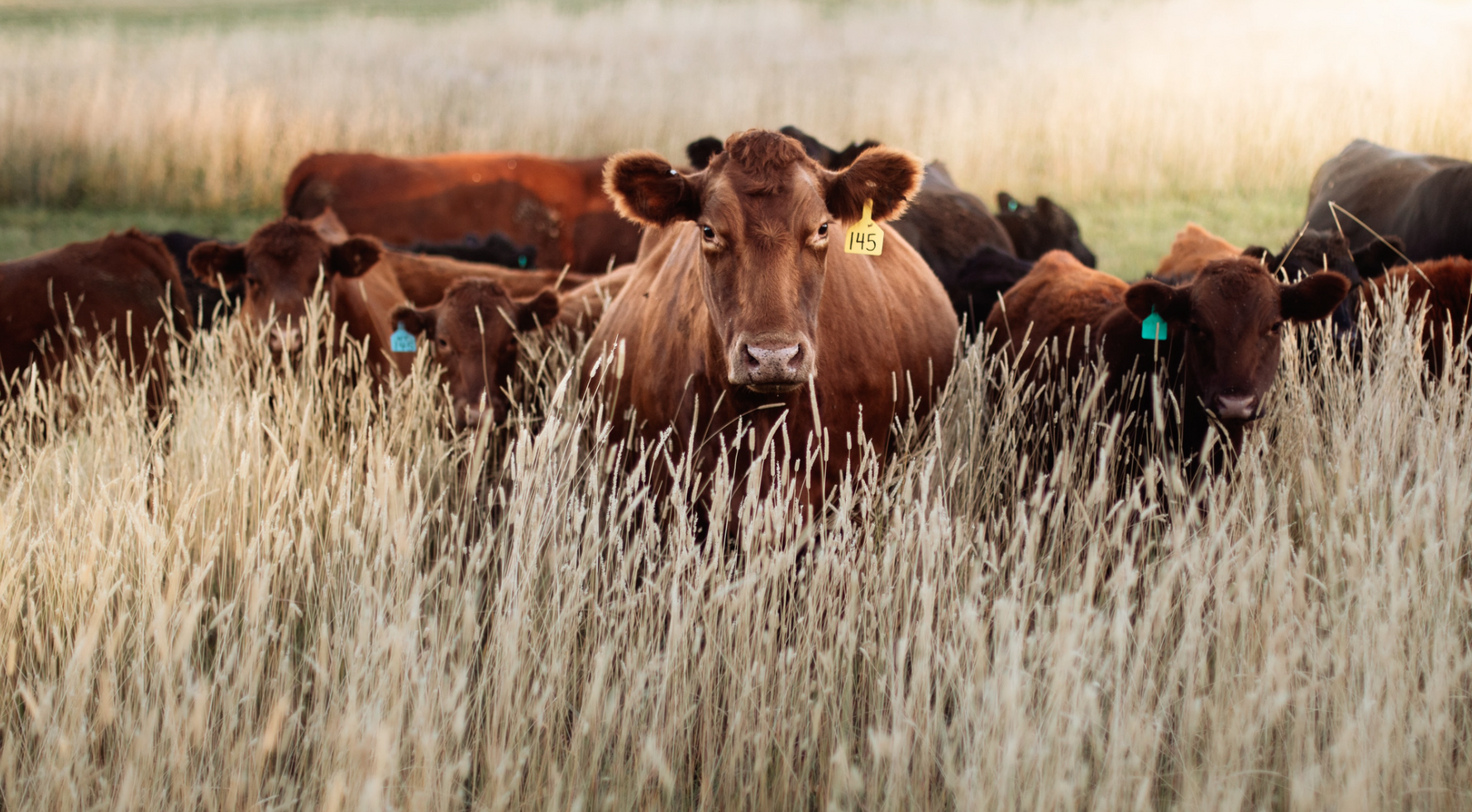
MOVING WITH NATURE, NOT AGAINST IT.
How our Cattle Graze
Our cattle are moved through a series of pastures throughout the growing season. This approach gives each paddock time to recover before animals return. It keeps grasses healthy and roots deep, and it builds soil that holds more water and nutrients year after year.
We adjust our rotation schedule to the season. In the spring, when grass grows quickly, cattle graze each section for two days. In summer, when growth slows, we move them daily. Stocking density is kept low to avoid pressure on the land (1.5-2 acres per cow).
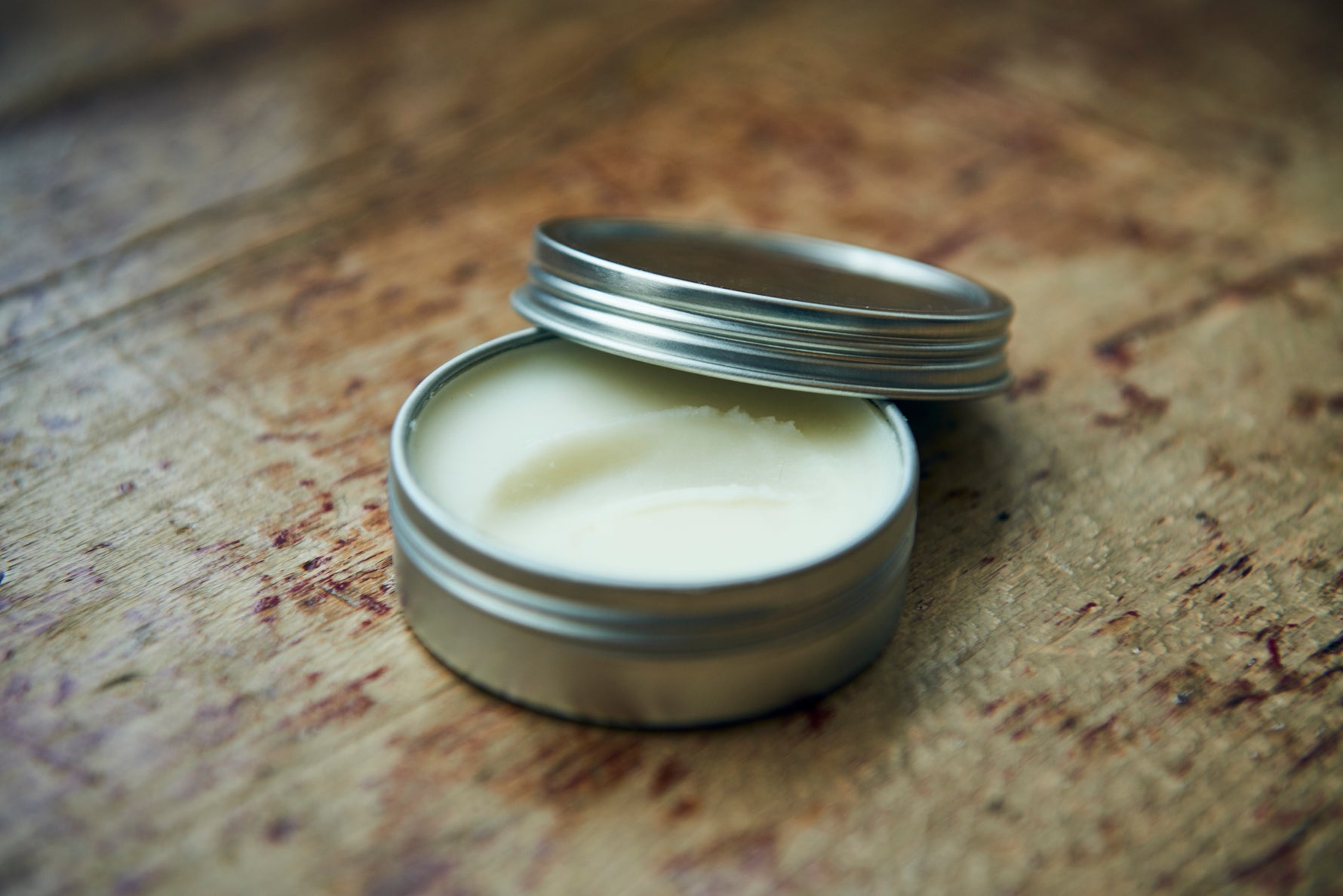
KNOW WHERE YOUR TALLOW COMES FROM
Why it Matters for Skincare
We source 100% of our tallow from our own cattle raised right here on the ranch. It’s triple-rendered from only pure suet (the nutrient dense fat around the kidneys) in small batches at a USDA facility. Every batch is tested to ensure low moisture, stability, and a safe shelf life. Each jar is traceable.
The result is premium tallow skincare product with a clean fatty acid profile, naturally rich in vitamins A, D, E, and K, because it was raised right and rendering properly with full transparency.
Reading the Land to Manage Rotational Grazing
When & why we move cattle
At Beaver Brook Ranch we manage our rotational grazing patterns based on what we see in the field. We move animals when the pasture tells us it’s time — our cattle typically move to a new pasture every 1-2 days.
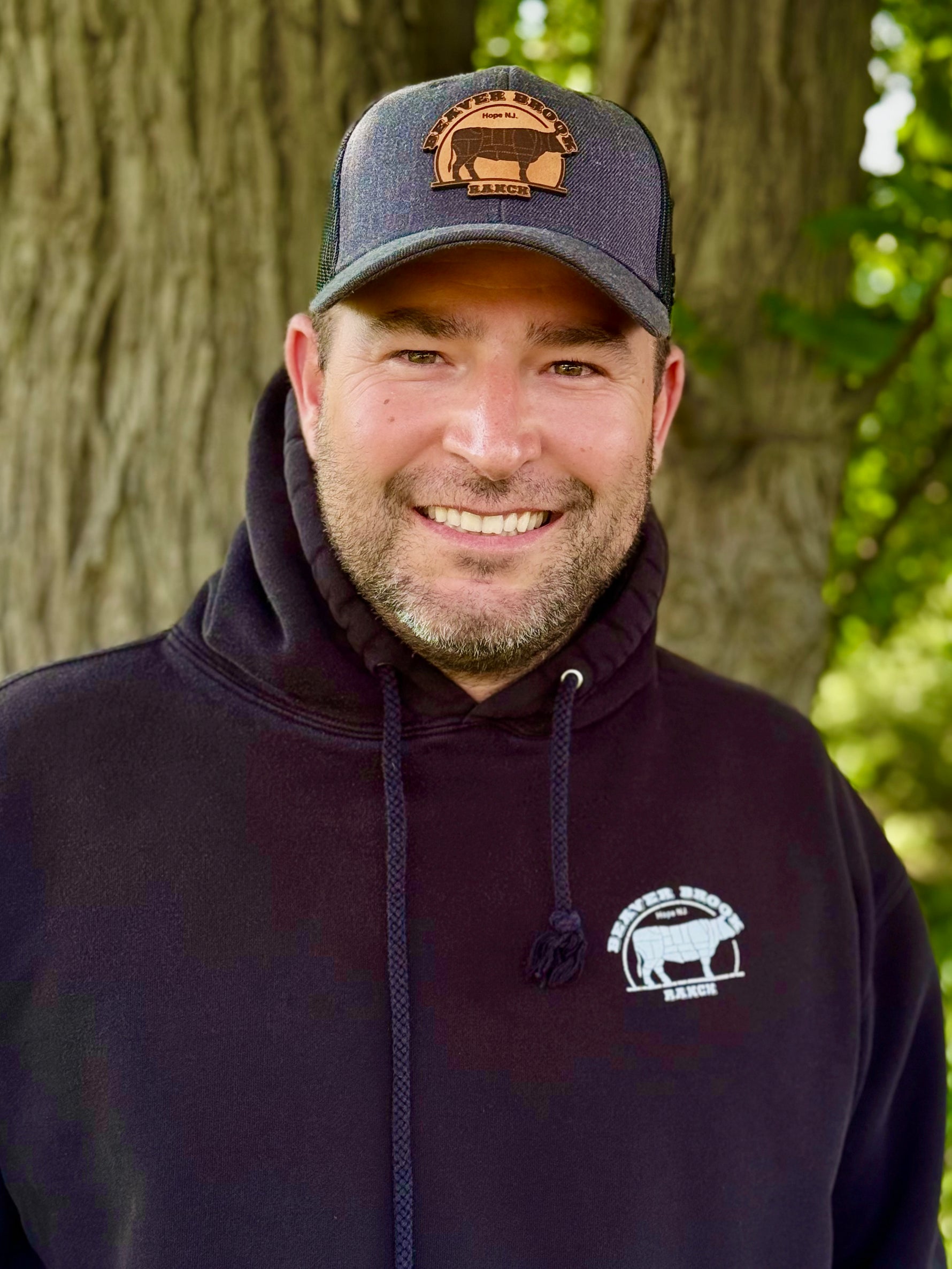
Start with Soil
"Soil is the starting point for everything we do at Beaver Brook Ranch. Healthy soil supports the grasses that feed our herd, and it determines the quality of the beef and suet we produce. We don’t treat soil as a fixed resource. We manage it as a living system."
- Stefan Schoen, Owner & Rancher
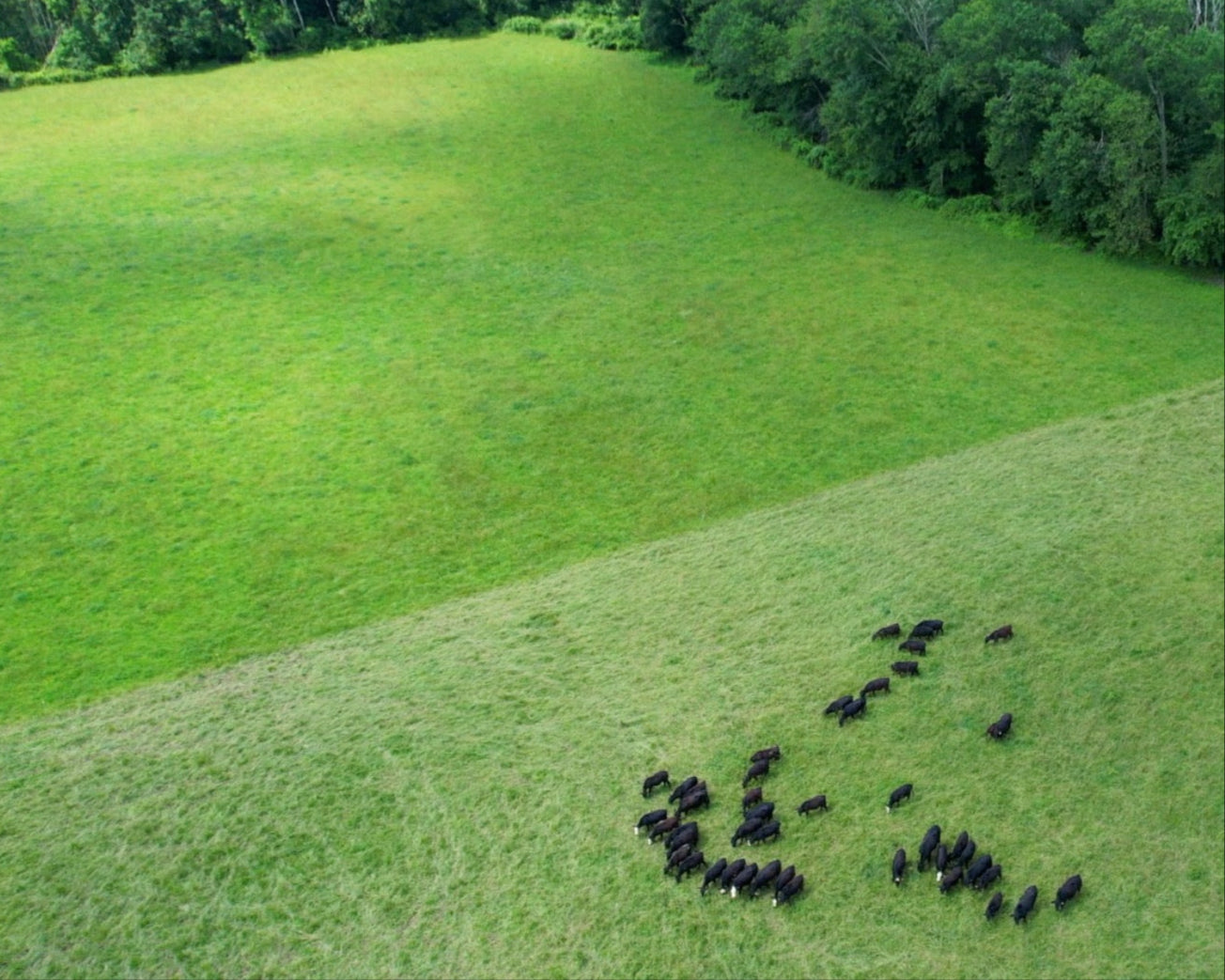
Monitor Grass Height
Our goal is to graze pastures when the grass is between 12 and 8 inches tall. This is when the plants are most nutrient-rich, and when cattle can graze efficiently without damaging future growth. We avoid letting the grass drop below 5-6 inches. If the grasses were to ever get down to 1 inch, the plant is stressed, the roots are weakened, and regrowth is delayed.
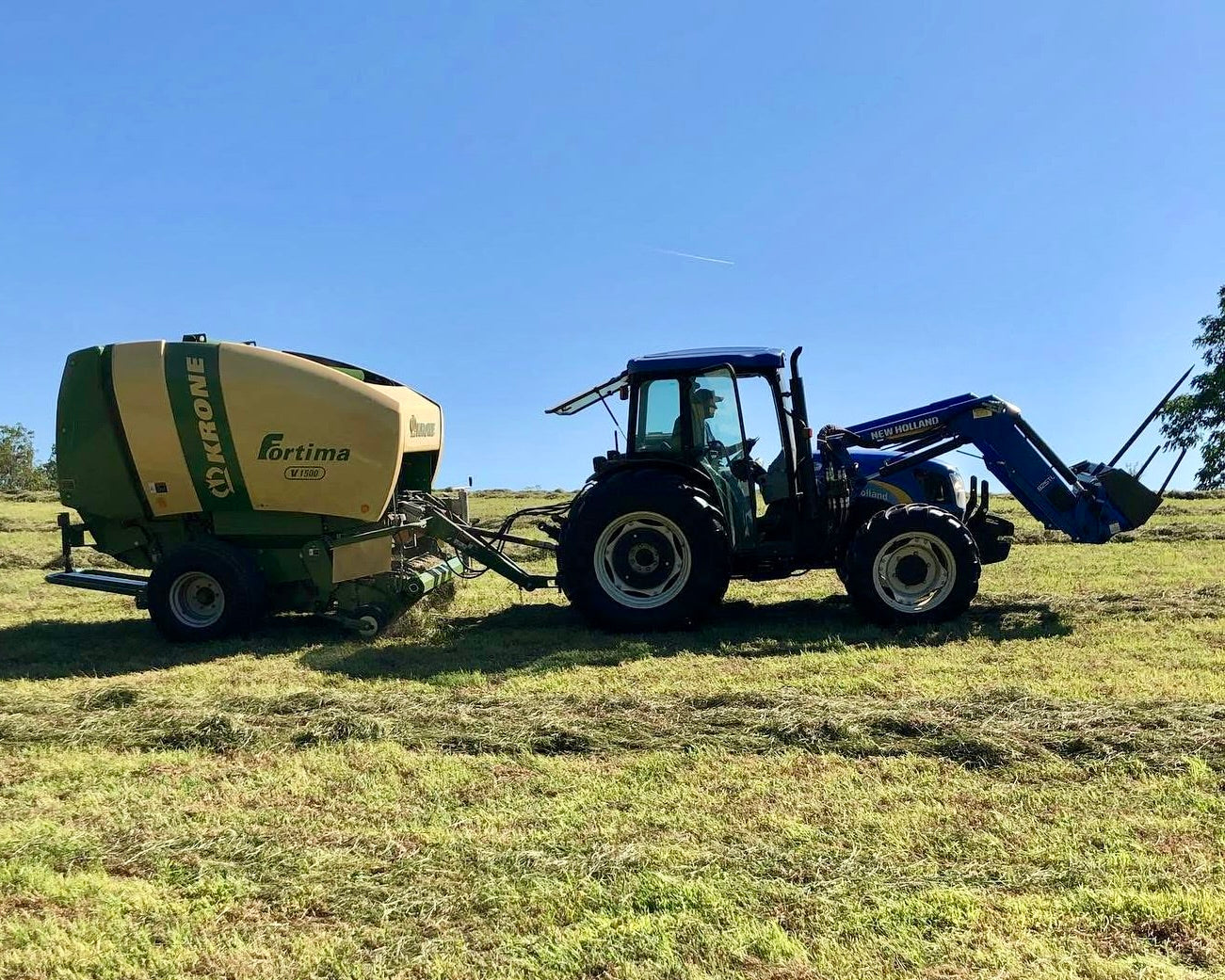
Make Seasonal Adjustments
Grass doesn’t grow the same way year-round, so our rotation doesn’t either.
In the spring months, regrowth happens quickly. Cattle stay in each paddock for up to 2 days. This keeps the plants from maturing too far while still allowing for high-quality grazing.
During Summer the grass grows more slowly so we reduce grazing time, moving the herd to the next paddock every day.
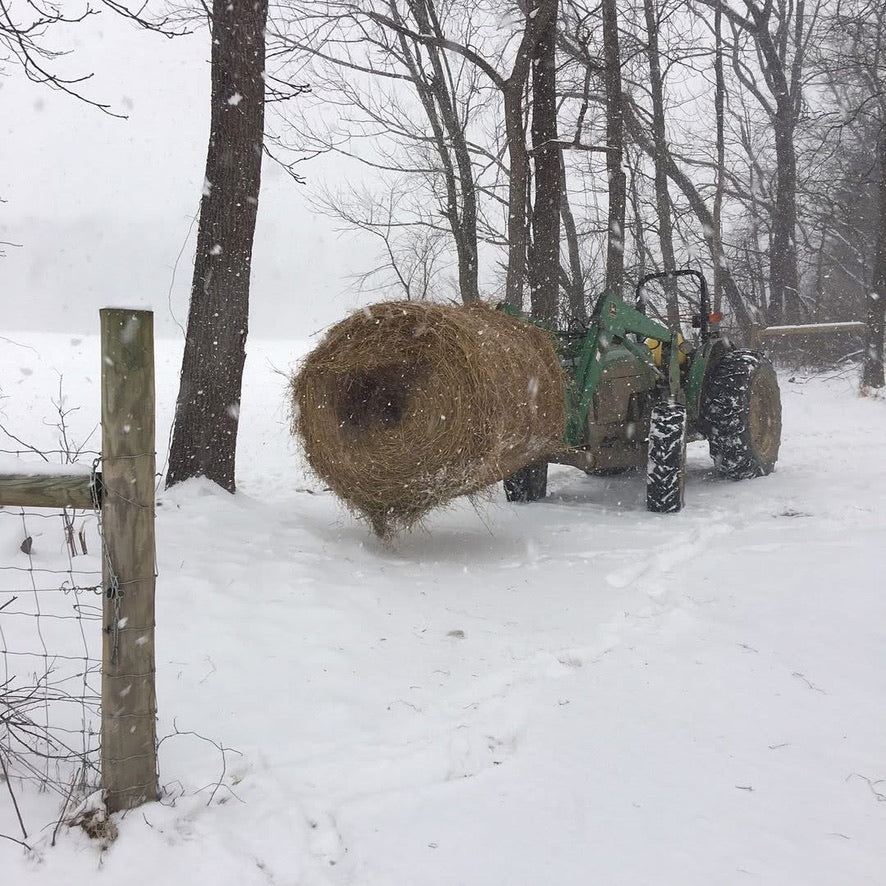
Plan for Winter Grazing
During the winter months our pastures go dormant here in New Jersey. We pull the herd off the grazing pastures during the winter entirely. Our cattle stay in a 20 acre winter pasture with plenty of space to roam and places to find shelter from the elements.
What do the cattle eat in the winter? We feed them with dry hay baleage cut from our own fields and wrapped to ferment naturally — a method that keeps more nutrients intact more than dry hay alone.
We're often asked this question:
"How do you get the cows to move from one paddock to the next?"
It's easy. Just open the gate and they happily wonder over to the next open paddock!
"Why does the herd move to a new paddock without any convincing?"
You've heard the saying, "The Grass is Always Greener" well with grass fed cattle it takes on a slightly different meaning.
Our cattle forage for the most succulent tops of their favorite grasses first. After just 1-2 days it gets a little harder to find the best grasses and they'd rather just move to a new field where they can easily find the most delicious, and nutritious grasses to munch on. This mimics how bison migrate and its where ranchers originally got the idea for rotational, or restorative grazing.
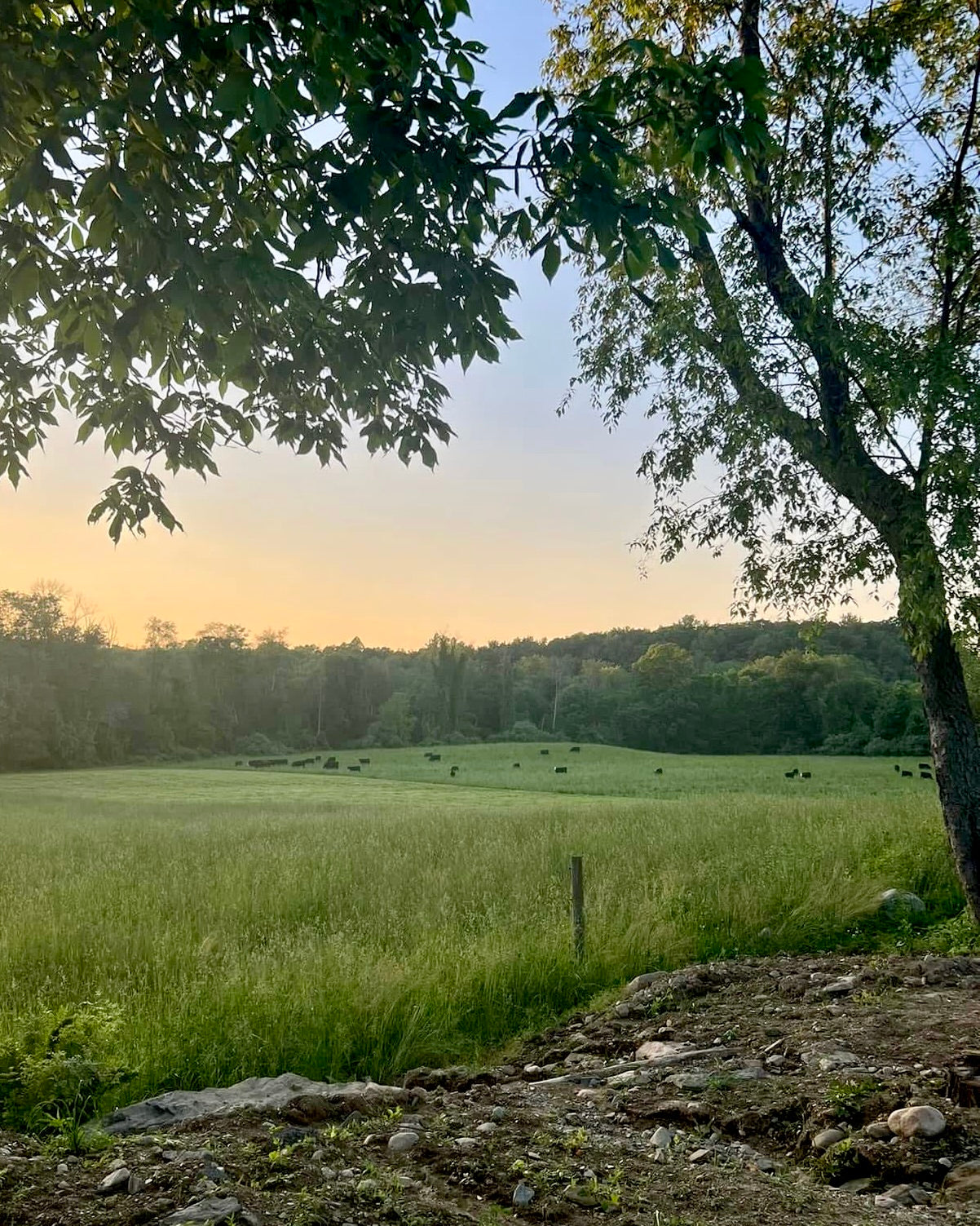
NATURE'S REGENERATIVE PROCESS
How the Cows Contribute
Every part of the grazing cycle helps the land rebuild itself.
Hoof Impact creates shallow indentations that hold moisture and help seeds settle into the soil. This improves germination and water infiltration.
Manure returns organic material and nutrients to the ground. It provides nitrogen, phosphorus, and microbes that support the soil food web.
Rotational Grazing encourages grass to regrow. When done properly, it signals the plant to push energy downward into the root system, increasing depth and density.
These processes improve soil structure, add organic matter, and increase the soil’s ability to store carbon. This is known as carbon sequestration — storing atmospheric carbon in plant roots and soil. It's a key part of how regenerative systems help address climate impact.
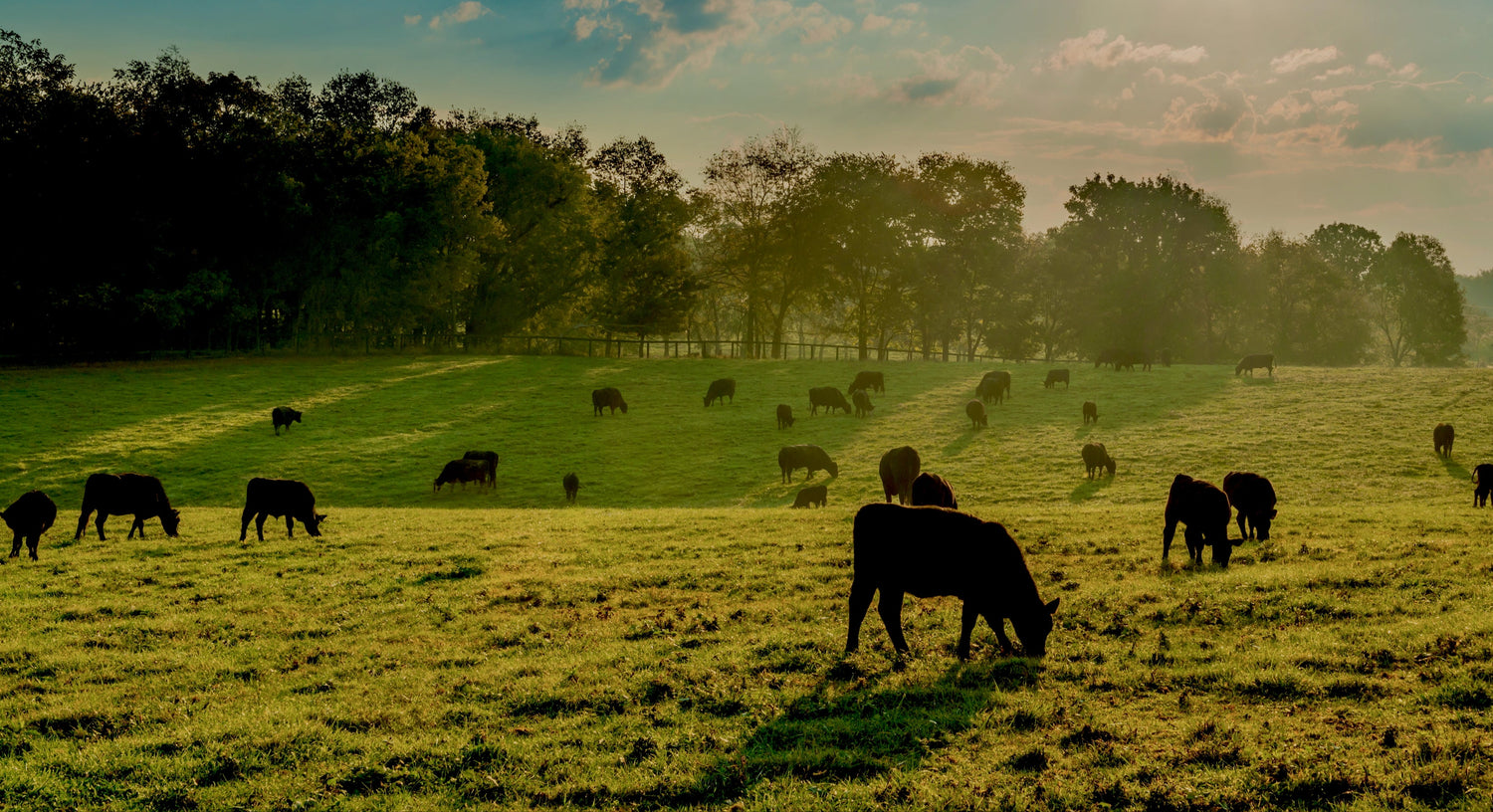
Better Tallow from Happy Cows
Low-Stress Environment
Cattle under stress produce different fat. It's often softer, more prone to oxidation, and harder to render cleanly. Our animals are managed with low-stress handling, consistent rotation, and open pasture access year-round.
- Lower cortisol in the animal
- Cleaner, clearer rendered fat
- Neutral scented suet/tallow
That’s why our tallow behaves well in formulations and feels gentle on sensitive skin — because the fat itself is high quality from the start.
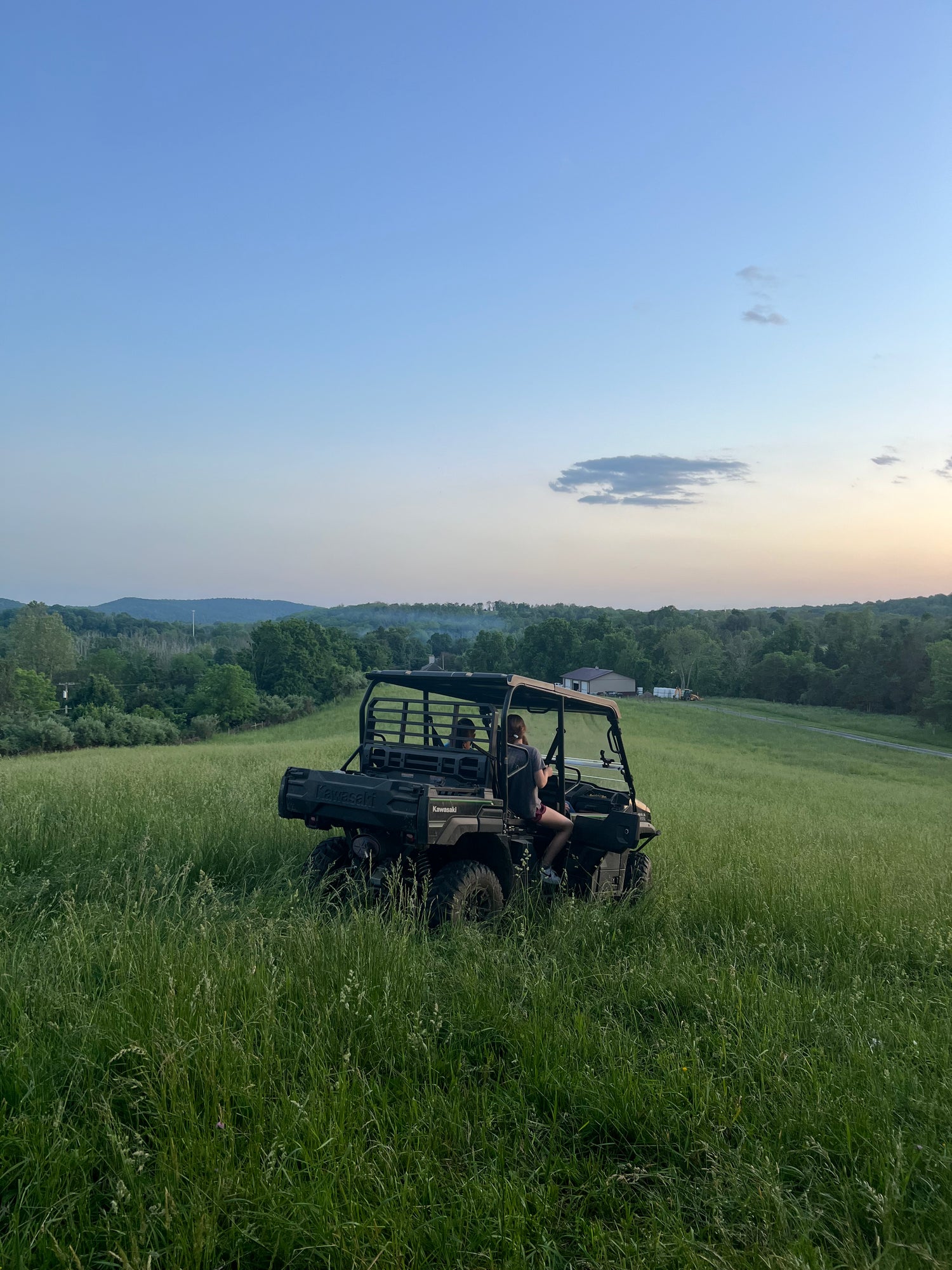
Ecological Benefits
Healthy Ecosystem
Forage volumes nearly doubled: More grass, more diversity, and higher nutritional value per acre.
Invasive Species are Kept in Check without herbicides. We mow with a brush hog between grazing cycles as needed to maintain plant balance.
Water Retention has Improved and our pastures now absorb rainfall efficiently and resist erosion.
These changes give us more consistent pasture, reduce reliance on external inputs, and help the land stay productive through drought and heavy rain.

Raising Healthy Cattle Starts with Diet
Our Menu of Nutritious Grasses
We worked with agronomists to create a seed blend specific to our land, climate, and grazing system.
- Echelon Orchard Grass - High palatability and strong regrowth.
- Kora Tall Fescue: Deep roots and drought tolerance.
- Fojtan Festulolium: Fast growth and added forage diversity.
- Freedom Red Clover: Adds protein and fixes nitrogen.
- Alice White Clover: Supports grazing and attracts pollinators.
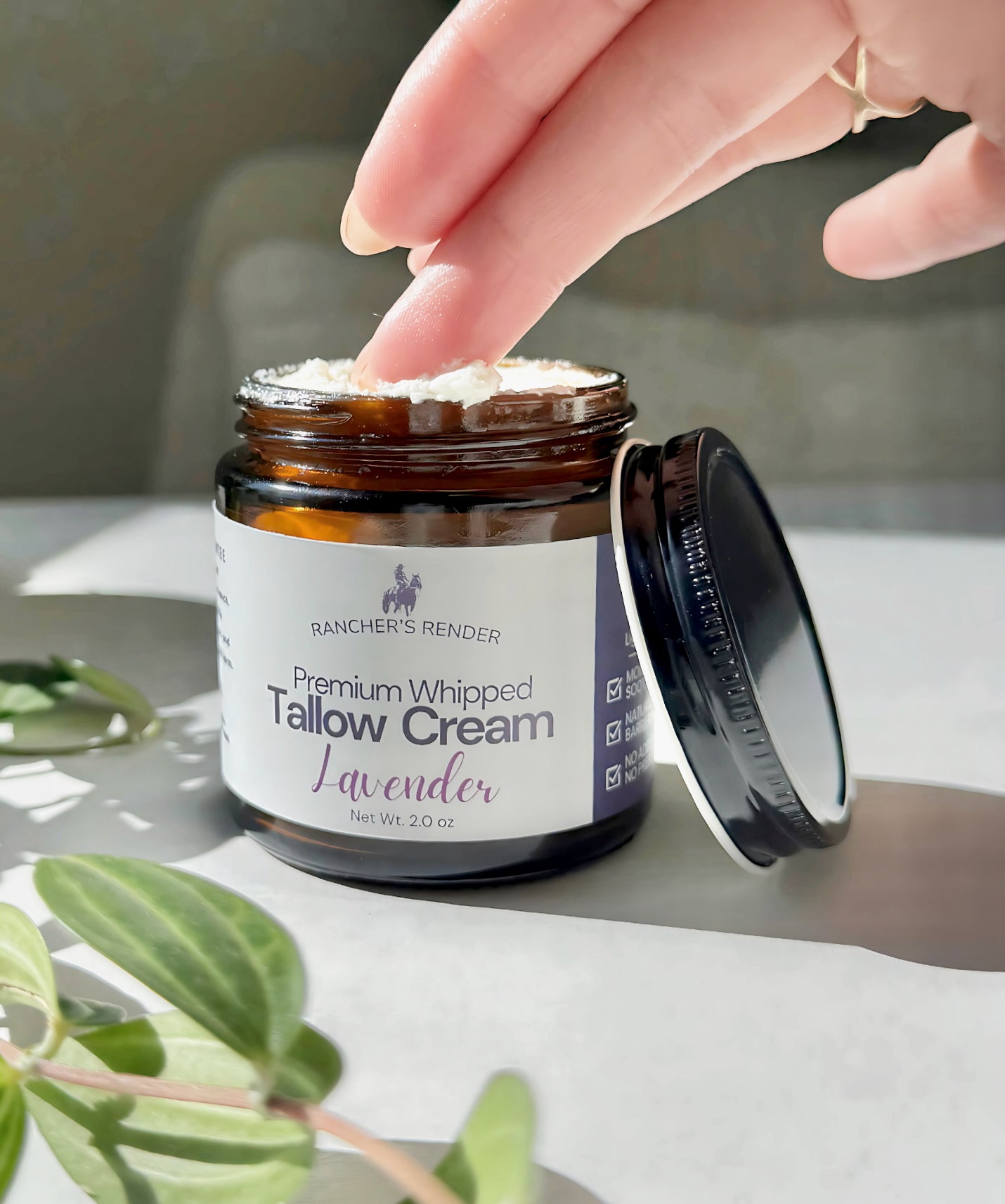
Healthy Diet, Better Tallow
Nutrients That Matter
Fat carries fat-soluble vitamins — and when the diet is diverse and the animal is healthy, those nutrients show up in the final product. Our tallow contains:
Vitamin A: Supports skin turnover
Vitamin D: Helps calm and balance skin
Vitamin E: Acts as an antioxidant
Vitamin K: Supports healing and reduces redness
These nutrients come from forage-based diets, not additives.
Why is Rancher’s Render the Best Place to Buy Tallow?
At Rancher’s Render, we do everything ourselves — from raising the cattle to rendering the suet into tallow. We don’t buy bulk fat. We don’t outsource production. We don’t cut corners. Every jar of balm we sell starts with the land we manage and the animals we care for, all raised at our family ranch in Hope, New Jersey.
We use only kidney suet — the cleanest, most stable fat on the animal — and we render it in small batches at a USDA-certified facility. No added preservatives. No synthetic fillers. Just nutrient-rich tallow designed to work with your skin, not against it.
Our cattle are 100% grass-fed and rotationally grazed. We don’t use growth hormones or routine antibiotics. We track pasture health, forage diversity, and seasonal shifts because they all impact the quality of the fat. And because we control the entire process, we can trace every jar of balm back to the animals — and even the pasture — it came from.
We don’t follow skincare trends. We follow the soil, the seasons, and the health of our herd. That’s what makes our product different — and why people who care about what goes on their skin trust us.
When you use Rancher’s Render, you’re not just moisturizing. You’re supporting a regenerative system that prioritizes land health, animal welfare, and clean, effective skincare — built from the ground up, with nothing to hide.
What You’re Really Getting When you Buy Ranch-Direct
You’re getting a premium skincare product made from the highest-quality suet fat — not trimmings, not leftovers — rendered slowly and cleanly to preserve its natural benefits for your skin.
You’re getting full transparency. We raise every animal ourselves, manage every pasture, and render every batch with skincare in mind. No vague sourcing. No commodity blending. Every jar is traceable — from pasture to puck.
You’re supporting a real place. A family-owned and operated ranch in Hope, New Jersey, where we do the work ourselves and stand behind every product we make. Stop by for a Ranch Tour - Just remember to call me first to setup a time! : )
It’s skincare with integrity — rooted in the land, built on trust, and made the right way from the start.

